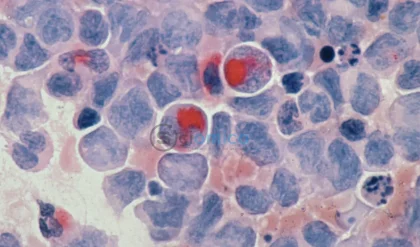
A groundbreaking study conducted by researchers at Washington University School of Medicine in St. Louis has revealed a potential strategy for slowing or halting the progression of age-related macular degeneration (AMD), a condition that significantly contributes to blindness in individuals over the age of 50. The research team has pointed to cholesterol metabolism issues as a central factor in this vision loss, drawing connections to the known relationship between macular degeneration and cardiovascular disease.
The findings from this study, which utilized human plasma samples and mouse models, highlight the role of a specific molecule known as apolipoprotein M (ApoM). By increasing the levels of ApoM in the bloodstream, researchers believe it may be possible to rectify the cholesterol processing errors that lead to cellular damage in the eyes and potentially other organs. This innovative approach could pave the way for new treatment methods for AMD and even certain types of heart failure associated with similar cholesterol processing dysfunctions.
Publishing in the journal Nature Communications on June 24, the lead author, Dr. Rajendra S. Apte, emphasized the importance of this research. Current treatment options mainly address only the most advanced stages of macular degeneration and do not reverse the disease. “Our findings suggest that enhancing ApoM levels could provide new avenues to treat or prevent AMD, ultimately helping to preserve the vision of aging individuals,” he stated.
During routine eye examinations, doctors can observe cholesterol-rich deposits beneath the retina, a hallmark of macular degeneration. Although early-stage patients may maintain normal vision, these deposits incite inflammatory and degenerative processes that gradually compromise central vision. The most prevalent form, known as “dry” macular degeneration, leads to neurodegeneration in the retina akin to that seen in Alzheimer’s disease. In more severe stages, this condition can progress to “wet” macular degeneration, typified by abnormal blood vessel growth that further damages sight.
ApoM has emerged as a significant protector against inflammation and is crucial for maintaining healthy cholesterol levels. Apte and co-senior author Dr. Ali Javaheri investigated the effects of reduced ApoM levels that decline with age. They found that patients with AMD exhibited lower ApoM levels compared to healthy individuals, and similar reductions were observed in heart failure patients as well.
Through their research, the team determined that ApoM plays a vital role in the pathways of “good cholesterol,” which helps clear harmful cholesterol that contributes to inflammation. When ApoM is deficient, retinal and cardiac cells struggle to process cholesterol deposits, resulting in inflammation and cellular damage.
To test their hypothesis, the researchers increased ApoM levels in mouse models of AMD through genetic modification or plasma transfer. The results showed significant improvements in retinal health, function of photoreceptor cells, and a reduction in cholesterol accumulation. They discovered that ApoM activates a specific signaling pathway responsible for breaking down cholesterol in cellular compartments known as lysosomes, which are critical for waste disposal.
Importantly, ApoM needs to bind to another molecule, sphingosine-1-phosphate (S1P), to facilitate its beneficial effects.
Apte and Javaheri are currently collaborating with Mobius Scientific, a startup emerging from Washington University, to leverage these insights on ApoM for developing new interventions for AMD. They, along with WashU’s Office of Technology Management, launched Mobius Scientific in 2022. The implications of this research extend to potential therapies for heart failure, as both retinal and heart cells may rely on similar cholesterol metabolism processes influenced by ApoM levels.
As they continue to explore strategies aimed at increasing ApoM to promote healthy cholesterol metabolism over time, the researchers hope to address two major diseases associated with aging: macular degeneration and heart disease. This pioneering work was supported by various grants and funding organizations, highlighting its significance in advancing treatments for these pressing health challenges.
Reference:
- Tae Jun Lee, Andrea Santeford, Kristen M. Pitts, Carla Valenzuela Ripoll, Ryo Terao, Zhen Guo, Mualla Ozcan, Dagmar Kratky, Christina Christoffersen, Ali Javaheri, Rajendra S. Apte. Apolipoprotein M attenuates age-related macular degeneration phenotypes via sphingosine-1-phosphate signaling and lysosomal lipid catabolism. Nature Communications, 2025; 16 (1) DOI: 10.1038/s41467-025-60830-1






